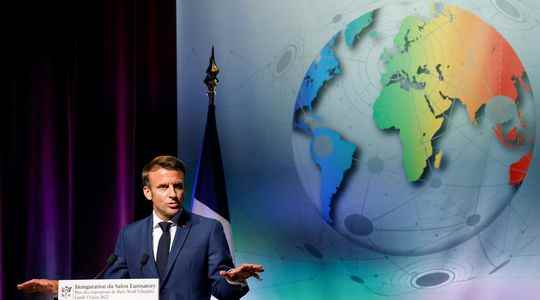The energy transition will force us to make some sacrifices, both in terms of purchasing power and sobriety efforts. These few immediate sacrifices are to highlight the significant climatic damage that they will help to avoid. For the climate as for many other projects, are we doing enough or too much for future generations and for the sustainability of our prosperity? More fundamentally, how should we divide national wealth into consumption on the one hand, and investments for the future on the other?
After all, our present prosperity comes from the investments made by our ancestors, in material (infrastructure, factories, etc.) and immaterial (knowledge) capital. But should we follow Stalin, Pol Pot and Mao, who all attempted such rapid economic catch-up with the populations of their time that it led to the sacrifice of entire generations? The arbiter of our collective and individual choices in this area is the cost of capital, and in particular the interest rate. If the cost of capital is too high, companies and households will not have enough incentive to invest for the future. If it is too low, too much investment will be made to the detriment of consumption.
The discount rate, a benchmark for climate investments
Public investments are valued on the basis of a discount rate, which is the “accounting” equivalent of the interest rate. The higher this rate, the less weight future benefits have in comparison to present costs in determining whether a particular public investment should be made. For example, at a rate of 1%, it is desirable to bury our nuclear waste at Bure despite the very high costs of Cigeo, whereas at a rate of 4%, the status quo is from a financial point of view , preferable.
With a discount rate of 1%, it is probably desirable to carry out today all decarbonization actions that cost less than 400 euros per ton of CO2 avoided, and there are many of them. But if we use a rate of 4%, we should only carry out green actions that cost less than 40 euros/tCO2. From the point of view of the interest of present and future generations, what should be this rate which determines the distribution between consumption and investments in our society? This is of course too important a question to be left to the financial markets alone.
Using a low rate means penalizing future generations. There is an ethical reason for this. In a fast-growing world, investing for the future means transferring wealth from the present generation to future generations, who are hypothetically much more prosperous than us. Investing therefore increases intergenerational inequalities.
An uncertain world
How to apply this morality in today’s world, when such uncertainties weigh on short-term and long-term economic growth? After all, some economists defend the idea of secular stagnation, a century without growth. Wars, pandemics, financial crises, weakening of the values of democracy, science and freedom… Today we have every reason to worry. On the contrary, others think that we are at the dawn of a new era, driven by abundant and cost-free renewable energy, by the dematerialization of our consumption, or by the conquest of space! Who to believe? Rationality demands that we recognize these deep uncertainties in our responsibilities towards the future and its operational translation into the cost of capital.
Therefore, caution is called for. We observe that the uncertainty about the future income of households weighs heavily on their savings efforts, which constitutes a personal sacrifice for the future. What is desirable at the individual level must be desirable at the collective level, by making precautionary investments in this world full of uncertainties. The best way to achieve this is to choose a low discount rate, and therefore a high carbon price, well above their current level in France and Europe. In other words, bury our nuclear waste today.
